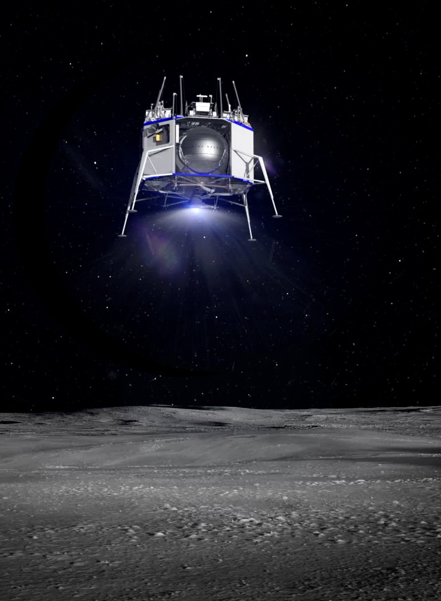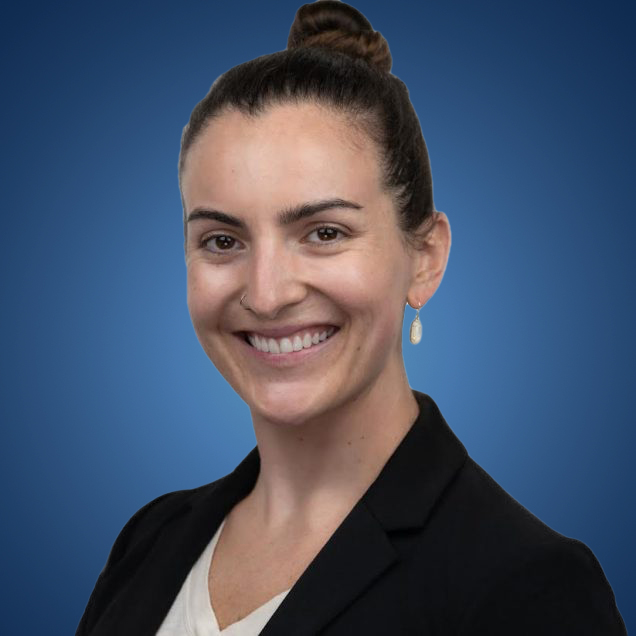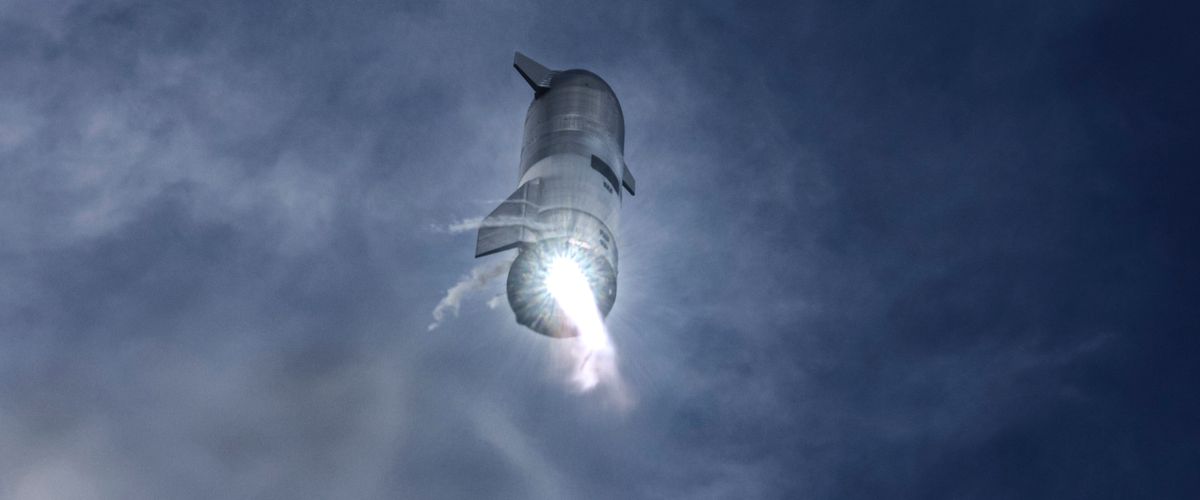How a scrappy student club launched dozens of ENG alums into the aerospace industry
By Patrick L. Kennedy
If you erred as an undergrad and a half-ton, flammable-fuel-filled metal canister exploded as a result, requiring the services of the local fire department, you might want to leave that incident off your résumé. That is, unless you were an undergrad engaged in rocketry, where failure is an integral part of the process.
In 2012, the Boston University Rocket Propulsion Group (BURPG) hatched a bold plan to launch a 35-foot rocket called Starscraper more than 62 miles into the sky, becoming the first student club to crack the Karman line, sending a vehicle into outer space. In 2015, the rocket blew up during a test.
The group’s efforts—and the venture’s fiery exclamation point—made a splash in Hub news. For example, a Boston Globe article from January 2015 featured the director, Armor Harris (ENG’15), and led with a photo of Doug Lescarbeau (ENG’18), Mehmet Akbulut (ENG’16), Joe Beaupre (ENG’17) and Jeremy Pedro (ENG’17) checking a rocket motor’s nozzle.
That was a few months before Starscraper burst and burned, dashing the students’ dreams. And that was seven years ago.
So where are they now? Mostly, working in rocketry.
Harris is director of engineering for SpaceX’s Starlink satellite bus. Lescarbeau also works on Starlink, as a mechanical design engineer in development. Beaupre is a launch engineer on SpaceX’s Dragon rocket. Pedro is lead propulsion engineer on SpaceX’s Falcon rocket.
And that’s just a handful. Most of the core group from that era of BURPG found work in the aerospace industry. Indeed, scores of BURPG alumni—ranging from its 2002 founding to the present—are employed not only in big companies like SpaceX, Blue Origin and Boeing, but also in ABL Space Systems and other start-ups that specialize in satellite launch vehicles, rocket parts and other aerospace essentials.
It’s an impressive showing for a club that doesn’t enjoy access to launch sites in remote areas, or warm winters, as some other collegiate rocketry clubs do. But maybe those headwinds—and the mishaps—helped make the BU rocketeers better engineers.
The pioneer

Luke Colby (ENG’03) founded the BU Rocket Team—now known as BURPG—in 2002. Colby had wanted to work on rockets since age two and had built and tested a rocket engine in high school.He relished the challenge of turning those dreams into mathematically airtight, three-dimensional metal vessels with thousands of working parts. He wasn’t afraid to slog through the requisite stages, crafting a stable combustion chamber, high-pressure fuel tanks, an aerodynamic vehicle and a parachute system to bring it safely back to Earth.
“One thing that makes it so difficult is the level of perfection that’s required,” says Colby. “Ninety-nine percent would be plenty good enough for a car; it’s not with what we do.”
At BU, Colby and his new rocket club garnered industry funding and built a solid fuel motor and a 12-foot-long rocket. For red-tape reasons, the students had to install a commercially available engine in the rocket rather than use their own experimental motor, but doing that allowed them to launch the vehicle from the airfield of a local amateur rocketry club.
The rocket flew 3,000 feet in the air—not the altitude the BU-designed engine would have achieved, Colby confides, “but it was still a thrill.”
After graduation, Colby moved to California to work for Scaled Composites, serving as technical lead on SpaceShipTwo, Virgin Galactic’s suborbital space plane. Over the next few years, several other BU Rocket Team alumni joined then-fledgling private space companies such as SpaceX.
Meanwhile, the BU rocket club carried on—for a time with Luke Colby’s younger brother, Aaron Colby (ENG’08), at the helm. However, the club had to limit its ambitions once the amateur club with the airfield closed. The next nearest launch site was in Virginia.
That’s been an ongoing struggle for the BU club, says Master Lecturer Caleb Farny (ME), associate chair for undergraduate programs and the club’s faculty advisor. Never mind a launch site—even a place to hold a stationary fire test is hard to come by in the densely inhabited Boston area. After much searching, Farny was able to locate a test site in Sudbury, Massachusetts.
At about this time, Harris arrived in Boston with a grand vision.
A fire lit

Harris caught the rocket bug at age six. “I got a model rocket, thought it was the coolest thing ever and away we went,” he says. As a teenager in eastern Oregon, “I would work a summer job to make some funds, use those funds to build a project for that year, then go out in the desert the next summer to try to launch it.”
As a sophomore mechanical engineering major at BU, Harris took over as director of the team, which he renamed BURPG. He proposed an ambitious plan to build a rocket every year for three years, culminating in the 35-foot Starscraper. After testing it in Sudbury, if all went well, the students hoped they would travel to the Nevada desert in 2015, launch the rocket, and make history.
“It was just a blast,” Harris says, recalling those efforts. “We were fortunate to get a really talented group of students together. I think the talent exists with ENG students every year; you’ve just got to ignite it. We probably had 20 people who for the better part of three years spent every waking hour on this.”

Drew Kelley (ENG’14) remembers the excitement and camaraderie of a multidisciplinary team stretching themselves as they strove toward an impossible goal. A computer engineering major, Kelley handled avionics. “I wrote all of the software we used to operate the vehicle,” Kelley says. “So, the data acquisition software, the sequencing software—all of the stuff we would use to conduct hot fire tests.”
The appeal of rocketry is twofold, says Kelley. “Initially, rocket engines are loud,” he laughs. “There’s just something about hearing one start up and knowing that you were responsible for making that happen.”
More than that, though, Kelley realized, “What folks do in the space industry is solve technical problems you don’t experience anywhere else.”
Lescarbeau was also drawn to rocketry by its technically challenging and viscerally exciting aspects. A mechanical engineering major, he joined BURPG as a freshman, when Harris was a senior. “We’d go out to this sandpit and fire a rocket engine,” Lescarbeau recalls. “As an 18-year-old, it makes a big impression on you: ‘Oh, my God, it’s a large fireball, and it’s very loud!’”
Not a question of if
To build a rocket capable of flight, the student team had to gain a mastery of structural engineering, flight dynamics, avionics and fluid dynamics. They had to solve a host of unique problems, like the fact that the fuel weighs many factors more than the rocket itself.
Besides the technical challenges, they took on myriad management and administrative tasks, like fundraising, insurance and regulatory paperwork—plus grunt work, like digging the foundation for a test stand.
Oftentimes, after the students rented a U-Haul van, drove to Sudbury, and spent hours setting up the rocket, some technical glitch would scotch the whole test.
That’s what Lescarbeau thought was happening on the day of Starscraper’s last fire test, in May 2015. “The initial start sequence failed, and we knew we had to abort the test,” he says. “It was kinda, ‘Aw, this is anticlimactic.’
“And then it exploded, and it was, ‘Well, that was climactic!’”
Yet such failures are not a bug but a feature of the iterative engineering process.
“It’s a little heartbreaking to spend a thousand hours on a thing and then watch it explode,” says Lescarbeau. “But it happens. You can make another one.”
“That’s one thing I don’t think is highlighted enough in engineering,” says Kelley. “You are going to fail. It’s not a question of if, it’s when. But there are a lot of positives that you can take away from failure.”
Into the future

Some of those positives? Experience that was directly applicable to their careers, and the networking and internships that enabled them to launch those careers.
“They learned along the way, made connections and put their engineering education to work,” says Farny. “That, to me, is the real purpose of the team.”
Harris directs the engineering of what he calls a “ridiculously ambitious” project at SpaceX. Starlink is a network of small satellites—currently numbering 1,600, with thousands more planned—in low Earth orbit, aiming to provide internet service in remote regions all around the globe, closing the digital divide.

Kelley works at Blue Origin, leading the avionics team for the Blue Moon lander program, the first step in Blue Origin’s long-term vision: “We’re focused on what it would take to preserve Earth—for example, moving heavy industry off planet. That really resonates with me and with the idea of the Societal Engineer.”
Lescarbeau works on Starlink with Harris. “He’s my boss’s boss,” says Lescarbeau, who has been working to dim the brightness of Starlink satellites in the night sky.
Doug Lescarbeau’s sister Elysse Lescarbeau (ENG’21) joined him at SpaceX. The siblings overlapped at BURPG when Doug was a senior and director of the club and Elysse was starting at ENG as a LEAP graduate student.

Later, working as a propulsion development engineer on SpaceX’s Merlin rocket engine, Elysse was responsible for increasing the life span of the thrust chamber assembly. One of her motivations for getting into the field was to be a woman in engineering.
“I think it’s super important to have those diverse perspectives and get more badass ladies into rocketry,” she says.
All told, at least two dozen ENG grads work at SpaceX, and the company built the rocket that sent another ENG alum, astronaut Robert Hines, to the International Space Station.
Not all BURPG alumni who land in the aerospace industry work for the big companies. Justin Fiaschetti (ENG’21) and Austin Briggs (ENG’21) cofounded Inversion Space, with the goal of building the first high-cadence return spacecraft for the commercial and defense industries. The start-up raised $10 million in seed funding last fall to develop their reentry capsule.

“Being treasurer and then vice director [of BURPG] taught me how to manage teams, which was good training for the start-up world,” says Fiaschetti. “It’s really about inspiring people and finding how to get the best out of everyone.”
Thompson Cragwell (ENG’18) works for a small company within a larger corporation. He’s a spacecraft mechanical engineer at Millennium Space Systems, a subsidiary of Boeing Space and Launch. Like Kelley, Cragwell was involved in both BURPG and the BU Satellite Program, which recently launched a satellite to monitor the Earth’s magnetosphere.
“I spent a lot of time machining parts in EPIC,” says Cragwell. “It gave me a good sense of design practice and feasibility in manufacturing. Because you can design a perfect shape in the computer world, but it has to be built in the real world.”
Full circle
Colby says that’s the value to students of hands-on projects. “In a world where we increasingly just sit in front of a computer all day, the opportunity for kids to actually get to work on something physical and build and test it is very important.”

After ten years in California, Colby returned to Massachusetts and founded his own advanced manufacturing start-up, Triton Space Technologies, supplying complex valves and other components to “all the big companies you’ve heard of,” he says.
Colby also donated a valve to BURPG for its Starscraper rocket, and he is one of several alumni who often return to review the designs of current BURPG projects. “I’m very proud of them and pleased to see that 20 years later, they’re still going,” says Colby.
Last fall, Harris visited the BURPG workshop to look over designs and parts for the students’ planned Pursuit rocket. Harris suggested the team use less expensive materials, making future failures more economically palatable, recalls Jack Sullivan (ENG’23), this year’s BURPG student director.

“We are taking that advice,” says Sullivan, who adds that Harris provided a morale boost by helping them reframe their notion of a test failure. “As Armor put it, SpaceX blows up engines all the time, and they’re professionals with way more money and way more time than us.”
During his visit to campus, Harris also guest-lectured a mechanical engineering class and took questions. One student asked, “What experiences or things did you learn from the BU rocket club that you’ve found applicable to your work at SpaceX?”
“Everything,” replied Harris. “The thing you learn in classrooms is how to think like an engineer, how to deductively solve problems, how to break things down and think your way through them. That is what stays with you.
“But all of the real engineering skills come from doing projects,” he added. “Design, build and test as many things as you can while you’re in school, because that’s the stuff that directly translates to how successful you’re going to be.”

Kelley said he draws on his BURPG experience “all the time” at Blue Origin. “Electrical and computer engineers don’t generally get a whole lot of exposure to how fluid systems work or how rocket engines work. But it’s really important for someone in my field to be able to go have that conversation with the people designing our landing engines or the people designing our propellant management systems.”
Lescarbeau brings it back to the setbacks that rocket engineers suffer with painful regularity on their way to success.
“Learning to cope with problems is maybe the best lesson that came out of [BURPG],” he said. “Physics is the real world and crazy things can happen, and you’ve got to roll with the punches. If you let the difficulties break you, then you can’t make forward progress.”
SpaceX rocket launch photos courtesy of SpaceX. Blue Moon lander image courtesy of Blue Origin. Alumni photos courtesy of Luke Colby, Thompson Cragwell, Justin Fiaschetti, Drew Kelley, and Elysse Lescarbeau.
This story originally appeared in the spring 2022 issue of ENGineer, the alumni magazine of the Boston University College of Engineering.
